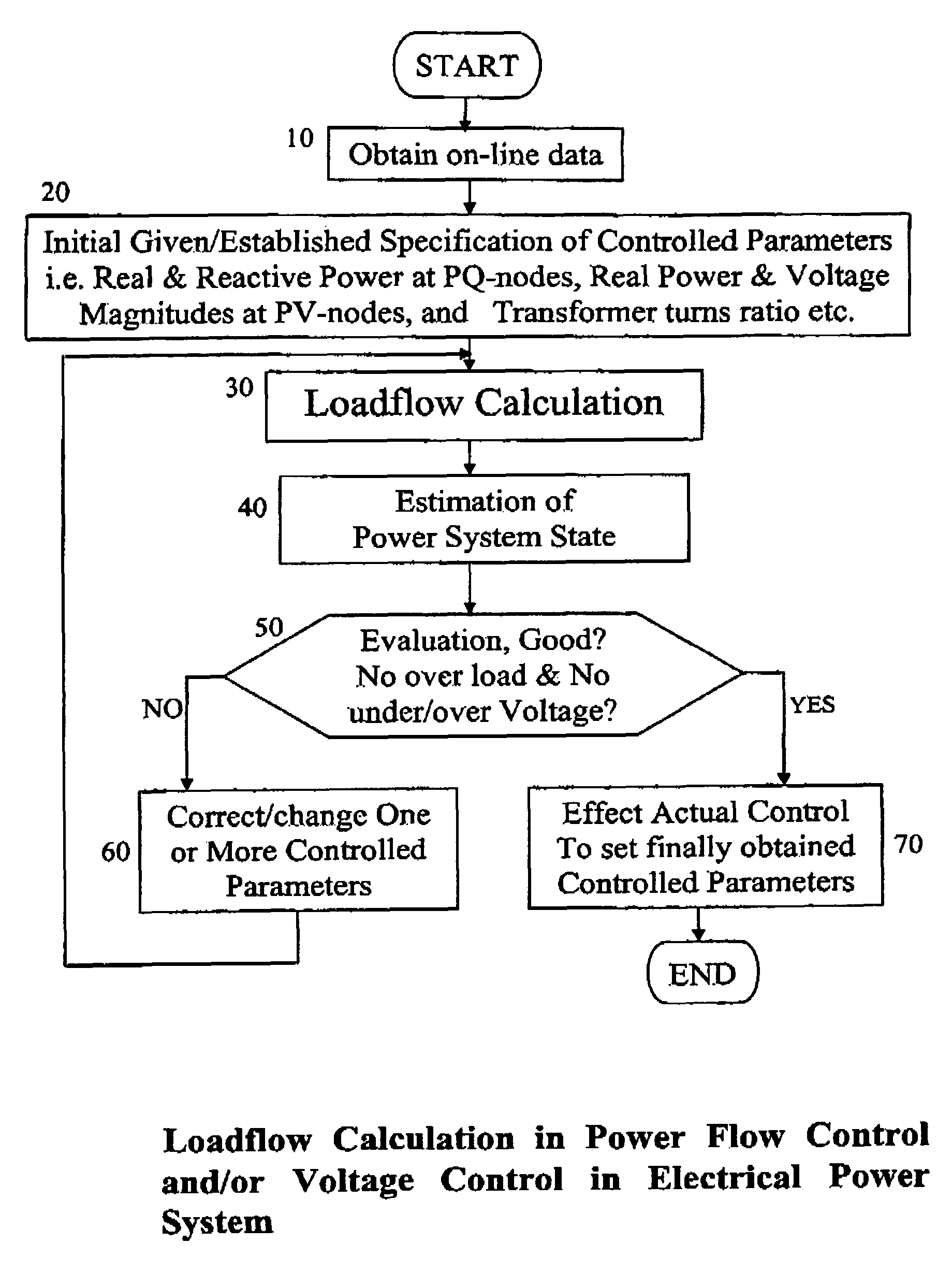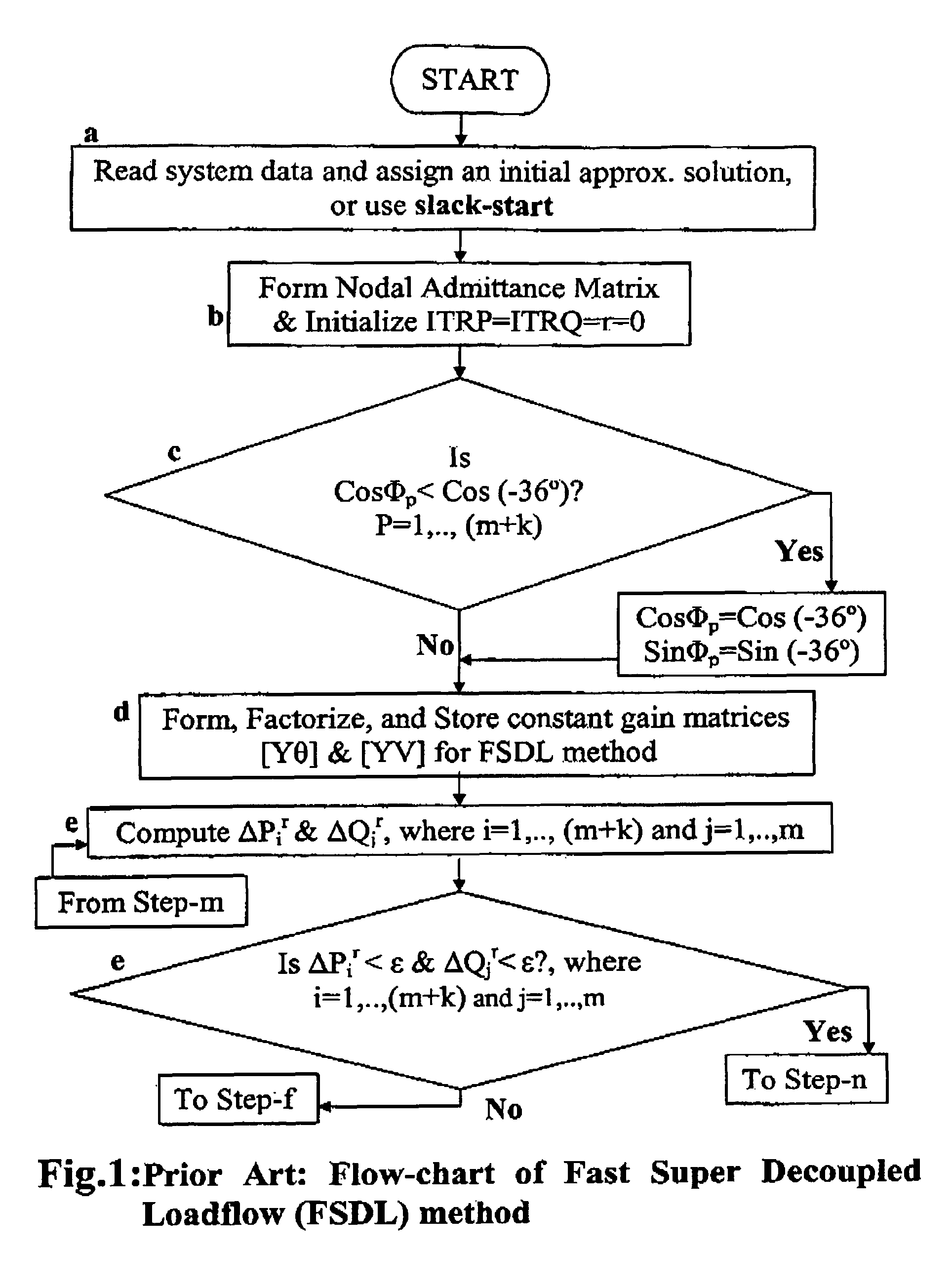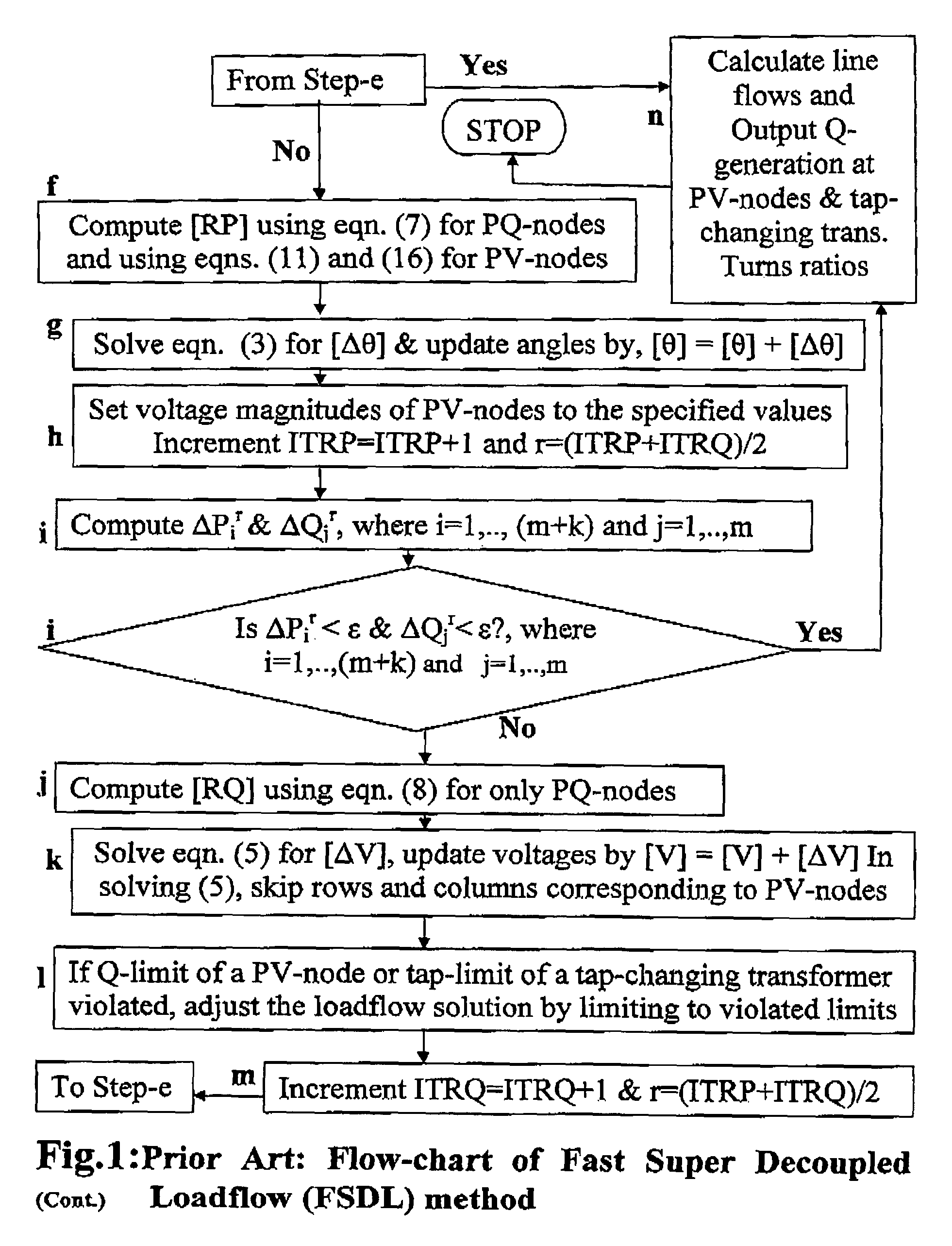Method of super super decoupled loadflow computation for electrical power system
a technology of load flow and electrical power system, applied in emergency protective arrangements for limiting excess voltage/current, welding apparatuses, magnetic materials, etc., can solve the problems of over/under voltage, change in the power flow pattern of the network, and constant disturbance of the healthy operating power network, so as to reduce the requirements for computer storage/memory or calculating volume, the effect of improving convergence and efficiency
- Summary
- Abstract
- Description
- Claims
- Application Information
AI Technical Summary
Benefits of technology
Problems solved by technology
Method used
Image
Examples
Embodiment Construction
[0095]A loadflow calculation is involved as a step in power flow control and / or voltage control in accordance with FIG. 5 or FIG. 6. A preferred embodiment of the present invention is described with reference to FIG. 7 as directed to achieving voltage control.
[0096]FIG. 7 is a simplified one-line diagram of an exemplary utility power network to which the present invention may be applied. The fundamentals of one-line diagrams are described in section 6.11 of the text ELEMENTS OF POWER SYSTEM ANALYSIS, forth edition, by William D. Stevenson, Jr., McGraw-Hill Company, 1982. In FIG. 7, each thick vertical line is a network node. The nodes are interconnected in a desired manner by transmission lines and transformers each having its impedance, which appears in the loadflow models. Two transformers in FIG. 7 are equipped with tap changers to control their turns ratios in order to control terminal voltage of node-1 and node-2 where large loads are connected.
[0097]Node-6 is a reference-node ...
PUM
| Property | Measurement | Unit |
|---|---|---|
| rotation angle | aaaaa | aaaaa |
| transformation angle | aaaaa | aaaaa |
| angle | aaaaa | aaaaa |
Abstract
Description
Claims
Application Information
 Login to View More
Login to View More - R&D
- Intellectual Property
- Life Sciences
- Materials
- Tech Scout
- Unparalleled Data Quality
- Higher Quality Content
- 60% Fewer Hallucinations
Browse by: Latest US Patents, China's latest patents, Technical Efficacy Thesaurus, Application Domain, Technology Topic, Popular Technical Reports.
© 2025 PatSnap. All rights reserved.Legal|Privacy policy|Modern Slavery Act Transparency Statement|Sitemap|About US| Contact US: help@patsnap.com



